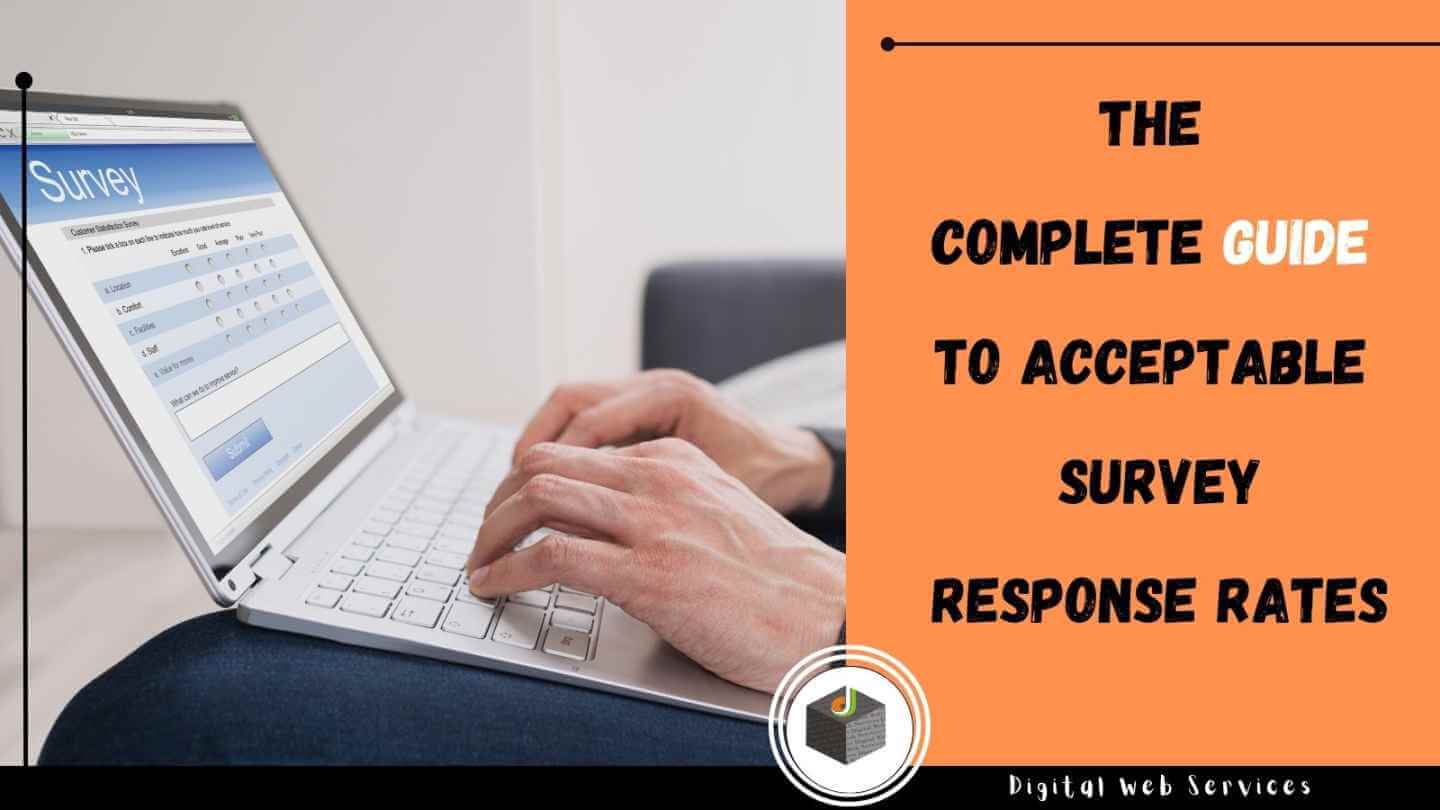
Using surveys as an effective method in marketing, sales and research is a powerful tool. Surveys are important and there are many tools to help marketers reach out to target audiences. In order to maximize the effectiveness of your survey responses, you must know what constitutes an acceptable response rate.
But it is difficult to calculate the response rate because it can vary based on the number of people in your target audience. Read on through to learn about what is a survey response rate, the top causes of low
survey results, and how to increase survey response rates.
What Is Survey Response Rate?
The survey response rate is the percentage of all members of the target audience who have responded to a survey. For example, if you send out a survey to one thousand people, and five hundred respond with valid responses, your response rate is 50 percent.
This is the number of people who respond to a survey after it has been sent. The response rate varies based on how many people you reach out to, so you must consider your target audience when calculating your survey response rate. It is important to determine what this number should be and how it can be affected by your target audience.
How To Calculate Survey Response Rate
The formula for calculating your survey response rate is:
Response Rate = (total responses / number of respondents) * 100
So, if you have a survey that you want to send out to 1,000 people and have 270 valid responses, your response rate is 27 percent. This number can be improved through the proper way of using surveys.
If your audience consists of 100 people, it is difficult to determine the correct response rate. It becomes impossible to calculate a correct percentage to account for identities and what type of person they are. As mentioned before, the correct response rates vary based on the survey’s target audience.
Causes Of Low Response Rate In Surveys
There are many reasons why a survey response rate may drop off. Some of the most common causes of low response rates include:
Wrong Audience
There is a simple reason why the wrong audience can increase your low survey results. It is because if you send out your survey to someone who doesn’t belong to your target audience, there is no point in asking them if they have bought your product or not. This will only get you wrong answers and result in useless surveys with no response rate. So make sure that you define who exactly qualifies as the target audience for your survey and exclude those who are not part of it.
Long Questionnaire
If your survey response rate is low and you suspect this might be due to the questions, consider shortening them. It is better to have a smaller survey with shorter questions than a long one with many questions. The questionnaire length is directly related to the number of people who will take it. Some respondents become tired before finishing the questionnaire because it seems too long and, therefore, give up before responding to all of them.
Not Interactive
Some surveys are not interactive, or they are not engaging enough so that people can understand what they are being asked or why they should answer those questions. In this case, people might not want to answer validly, which might lower your response rate. Make sure your survey is interactive and engaging so people will take the time to respond rather than quickly move on to another activity.
Accessibility
The level of difficulty in accessing the survey can also be a problem because you may have to access an online platform or link, which requires you to either download an application or the company website. If you are asking someone who has never heard of your company before or if they don’t know much about what you are offering, they won’t know where to find your application or website on the internet. You may increase your response rate by placing the survey on a platform that is easy for your customers to reach.
No Incentive
The absence of an incentive can also lead to low response rates. You should provide people with a way to receive incentives for completing the survey so they will want to respond to it and not move on to other things they have been looking at on their smartphones. An incentive can be any prize or gift or a discount in exchange for completing the questionnaire and answering most questions accurately.
How To Increase Response Rate In Surveys
In order to increase the response rate in surveys, you must first understand how to calculate your survey response rate. Then, make changes to fix the issues you feel might lower your response rate.
Choose The Right Format
There are different survey formats, some of which are more effective than others. So take the time to look at all the options before creating your own survey. Choosing the wrong format can lower your response rate because people will not be interested in answering or won’t have time to answer it all as it might be too long or its contents are not relevant enough for the audience you are targeting.
Shareability
If you want people to take your survey and participate, you should make it easy for them to share it by creating an easy form to copy, paste and send. You can do this in many ways, from embedding the form on your website or social media profile or creating a “pin it” button for your survey.
Targeted Audience
In order to send out a survey to the right people and increase the response rate, you must consider your target audience before sending it out. Send out your surveys only to those who belong in that category and who might be interested in taking the survey. This will help you gather the right information while getting a valid response from your target audience.
The Bottom Line
There are a lot of ways to increase your response rate. Some of these things might not work for everyone, and you need to find the right one that will work for your audience. Don’t get discouraged if your survey doesn’t have a high response rate initially, and make changes as you learn more about improving it.
Digital Web Services (DWS) is a leading IT company specializing in Software Development, Web Application Development, Website Designing, and Digital Marketing. Here are providing all kinds of services and solutions for the digital transformation of any business and website.










